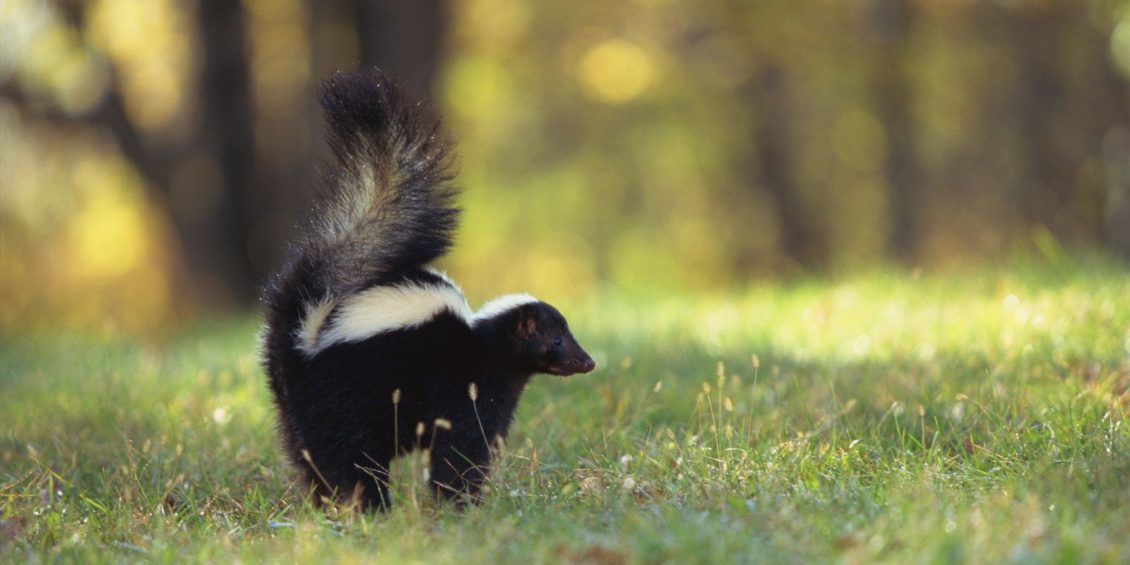Skunks are one of the biggest concerns for homeowners across the United States. Since their deeply unpleasant stink can linger for days after it’s been sprayed, it stands to reason you’d want to avoid that at all costs. And what better way to avoid a skunk spray, than keeping out the skunk itself?
Now, many homeowners don’t want to use store bought repellents, and other such devices, for fear of introducing chemicals into their backyard. So instead, today we’re looking at plants that skunks hate. This way, you’re keeping the wildlife out of the yard, and also planting something useful in your garden.
Tip: bear in mind that these plants ought to be used as a preventive measure against skunks, and not a downright solution to a skunk infestation. If you’re already in the midst of an infestation, then the best thing you can do is ask Wildlife X Team for help.
So what plants do skunks hate?
1. Summer squash
This tends to be a big favorite among homeowners, since squash is also a delicious vegetable to use in a host of yummy dishes. So planting it in your garden can have a double-use. But how does it work against skunks?
Well, as it turns out, the squash leaves are deeply irritating to skunks, and they will stay away if they sense squash near.
What’s the best time to plant? Squash ought to be planted in the spring, in a warm area of the garden with plenty of sun. As the name suggests, you’ll be harvesting the squash during the summer months, and enjoying some delicious treats, as well as a skunk-free garden.
2. Wild cucumber
Wild cucumber is actually a lovely thing to plant in your backyard, because when it flowers, this vine breaks out into tiny flowers that look a little bit like stars. As such, it makes for a wonderful decorative vine, and a skunk repellent.
Despite the name, wild cucumber fruits should not be eaten, but they will act as an effective repellent, since the lobes and spines of this plant are toxic to skunks.
When should you plant it? Wild cucumber is a warm season, fast-growing plant that needs to be planted in plenty of sun for best results.
3. Stinging nettle
Stinging nettle is bad for skunks in the same way direct contact is bad for humans. Since the plant grows these tiny, irritating hairs, it can be very aggressive to the skunk’s naturally soft fur. On top of that, stinging nettle can actually have a host of health benefits (when consumed in tea, for instance), so once again, you’re getting a two-in-one deal.
When to plant? Stinging nettle grows best when planted in the spring, and in at least partial sun. Keep in mind that it grows sideways, at the roots, so plant it in an area with plenty of space.
4. Crown imperial
The crown imperial has got to be one of the prettiest flowers you can pick for your garden, hands-down. But more than that, its pungent scent works to repel skunks, as well as other wildlife with sensitive noses.
When should you plant? Here, we’ve got a bit of a change of pace, since the crown imperial is actually best planted in the autumn, and enjoys a good dose of fall sun. A great aspect of this plant is that it doesn’t actually require yearly replanting, making the gardener’s job even easier, with the plant remaining just as efficient.
5. Horn hedges
Thick horn hedges keep skunks at bay in a very obvious way – their big, thick horns are stinging and unpleasant for the skunk’s delicate fur, so it will generally stay away from these hedges. To make the most of your hedges, you could line your yard with thick horn hedges (or thorn hedges), to create a natural fence.
When should you plant horn hedges? This will depend on the type of hedge chosen, but many of these slow-growing hedges work best when planted in the fall.
6. Daffodils
These have got to be everyone’s favorite skunk repellent, just because they’re so pretty. Not only are you getting a potent weapon against skunks, since daffodils are toxic to them (as well as to other wildlife critters that may otherwise be attracted to your home), but you’re also decorating the backyard. Better yet, daffodils are very easy to take care of, and spend a long time in bloom, which makes them ideal even for beginner gardeners, or those who can’t spare a lot of time in their backyard.
When should you plant? Ideally, you will want to plant daffodil bulbs in early autumn, around September. In some cases, especially for potted daffodils, you may even plant them in the spring, before they actually come into flower.
The good news is, there’s plenty of choice in natural skunk repellents!









Leave a Reply
View Comments